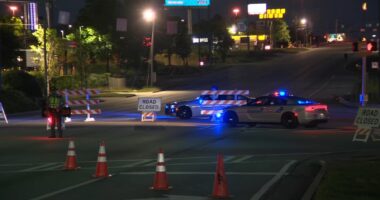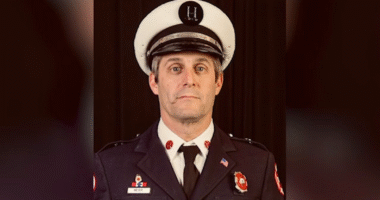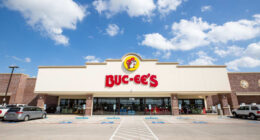
Passengers aboard the Delta plane that crash-landed in Toronto were left vomiting and suffering anxiety after the rollercoaster corkscrew landing.
All but two of the 21 individuals who were transported to medical facilities following the airplane’s crash during landing have now been discharged, as per officials speaking at a press conference on Tuesday.
During the briefing on Tuesday, Cory Tkatch, Operations commander at Peel Regional Paramedic Services, mentioned that their team had to attend to a variety of injuries, with most related to back sprains, head trauma, anxiety, as well as some cases of headaches, nausea, and vomiting due to exposure to fuel.
The jet with 80 passengers and crew landed hard, burst into flames and flipped over.
At least three of the passengers who were taken to the hospital, including a child, were critically injured.
The two who remain in the hospital do not have life-threatening injuries, said Deborah Flint, CEO of Greater Toronto Airports Authority.
One passenger told told CBC News that he found himself upside down and still strapped in his seat after a forceful landing.
Peter Carlson recounted how, upon unfastening his seat belt, he was thrust onto the ceiling by the impact and could smell gas. Despite the chaos, he and another gentleman managed to assist a mother and her young son in exiting the aircraft before making their own escape.
Most of the passengers were able to begin evacuating on their own, fire officials who responded to the crash said.
Still, some footage captured emergency crews helping passengers out of the wreckage.
Passengers said they could smell fuel as they made their escape.
The plane had caught on fire in some areas in the crash-landing but its emergency system was able to prevent a catastrophic explosion.
The U.S. Federal Aviation Administration said the Transportation Safety Board of Canada will lead the investigation. The National Transportation Safety Board in the U.S. was sending a team to assist.
Communications between the tower and pilot were normal on approach and it’s not clear what went so drastically wrong when the plane touched down.
Video posted to social media showed the aftermath with the CRJ-900LR overturned, the fuselage seemingly intact and firefighters dousing what was left of the fire as passengers climbed out and walked across the tarmac.
John Cox, CEO of aviation safety consulting firm Safety Operating Systems, told the Associated Press that the CRJ-900 is a proven aircraft that’s been in service for decades and does a good job of handling inclement weather.
He said it’s unusual for a plane to end up on its roof.
‘We’ve seen a couple of cases of takeoffs where airplanes have ended up inverted, but it’s pretty rare,’ Cox said.
The CRJ-900, a popular regional jet, was developed by Canadian aerospace company Bombardier. It’s in the same family of aircraft as the CRJ-700, the type of plane involved in the midair collision near Reagan National Airport on January 29.
Among the questions that need to be answered, Cox said, is why the crashed plane was missing its right wing.
‘If one wing is missing, it’s going to have a tendency to roll over,’ he said. ‘Those are going to be central questions as to what happened to the wing and the flight data recorder and cockpit voice recorder. They will be found, if not today, tomorrow, and the Transportation Safety Board of Canada will read them out and they will have a very good understanding of what actually occurred here.’
The crash was the fourth major aviation accident in North America in the past three weeks.
A commercial jetliner and an Army helicopter collided near Reagan National Airport in Washington, DC, on January 29, killing 67 people.
A medical transportation plane crashed in Philadelphia on January 31, killing the six people on board and another person on the ground.
And on February 6, 10 people were killed in a plane crash in Alaska.

















